HOW TO BUY A HOME TIPS FROM EXPERTS CÓMO COMPRAR
UNA CASA CONSEJOS EXPERTOS

HOMELESSNESS: WHAT CAN WE DO?
AYUDA PARA NO QUEDARNOS SIN HOGAR
VOTING HELP FROM LWV
VOTAR CON CONCIENCIA

HOW TO BUY A HOME TIPS FROM EXPERTS CÓMO COMPRAR
UNA CASA CONSEJOS EXPERTOS

HOMELESSNESS: WHAT CAN WE DO?
AYUDA PARA NO QUEDARNOS SIN HOGAR
VOTING HELP FROM LWV
VOTAR CON CONCIENCIA
MOVING UP THROUGH EDUCATION
From Housing Insecure to Acting Director of Operation Hope
Bea Palmer vence la pobreza gracias a la educación
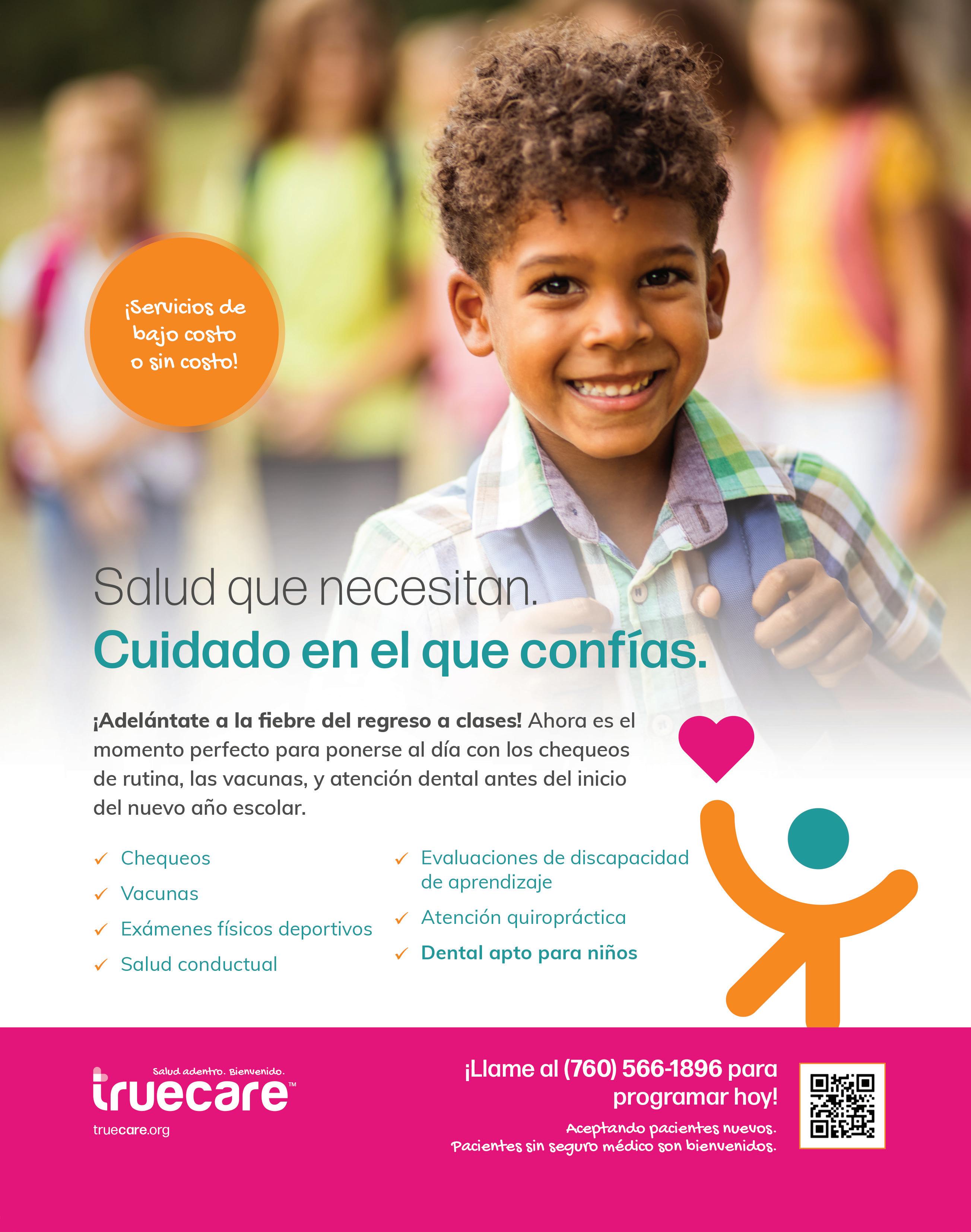
Events
Health
- Flourish & Nourish Health Fair & Breast Milk Drive - Stop Overdoses
Civic Engagement League of Women Voters Education Forums
Financial Empowerment
- How to Buy a Home, Part I
- Mortgages: Credit Unions vs. Banks
Feature
Yes, You Can Buy a Home!
Education
Free Books, Affirmative Action, FAFSA
Feature
North County service providers tackle homelessness
Services
Housing Shelters & Services
Actividades
Salud
- Feria de salud Flourish & Nourish y colecta de leche materna - Detengamos las sobredosis
Civismo
Foros educativos de la Liga de Mujeres Votantes
Empoderamiento financiero
- Cómo comprar una casa, parte I
- Hipotecas: cooperativas de crédito versus bancos
Artículo
¡Sí, se puede comprar una casa!
Educación
Libros gratis, Acción Afirmativa, FAFSA
Artículo
Los proveedores de servicios en el norte del Condado abordan el problema de personas sin vivienda
Servicios
Albergues y servicios de vivienda
The August issue of North County Informador offers the first part of a two-part series on homebuying. Find information about getting ready to purchase a home, help from experts, and inspiration from others. Bea Palmer of Operation Hope tells her inspirational story from homelessness to housing advocate and community leader. Plus, we talk about one of the most-pressing issues in North County today— homelessness, and what is being done to help people. As always, get information on education, health, civic engagement and events in your area.
- Write the editor: Editor@NorthCountyInformador.com
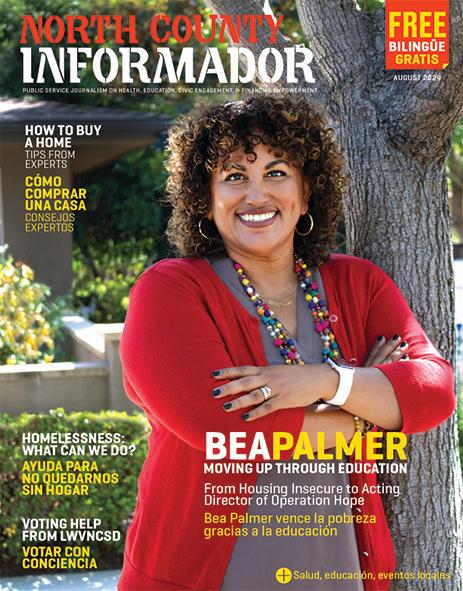
Cover Feature
Bea Palmer Takes Her Seat at the Table through Education, Community Service
Artículo de portada
Bea Palmer toma su lugar en la mesa a través de la educación y el servicio comunitario
El número de North County Informador para agosto ofrece la primera de una serie de dos partes sobre la compra de una vivienda. Encuentren información de cómo prepararse para comprar una casa, ayuda de expertos e inspiración de otras personas. Bea Palmer de Operation Hope cuenta su historia inspiracional que la llevó de sufrir la falta de vivienda a ser defensora del alojamiento y líder comunitario. Además, hablamos de uno de los problemas más apremiantes en el norte del condado hoy—las personas sin hogar, y lo que se está haciendo para ayudar a la gente. Como de costumbre, encuentran también información sobre la educación, la salud, el civismo y las actividades en su región.
- Escriban al editor: Editor@NorthCountyInformador.com

MANA de North County San Diego 3rd Annual Latina Conference Tercera Conferencia Anual Latina de MANA de North County San Diego
- “Somos UNA” (We Are One)
- Saturday, August 3rd
- Palomar College, 1140 W Mission Rd., San Marcos
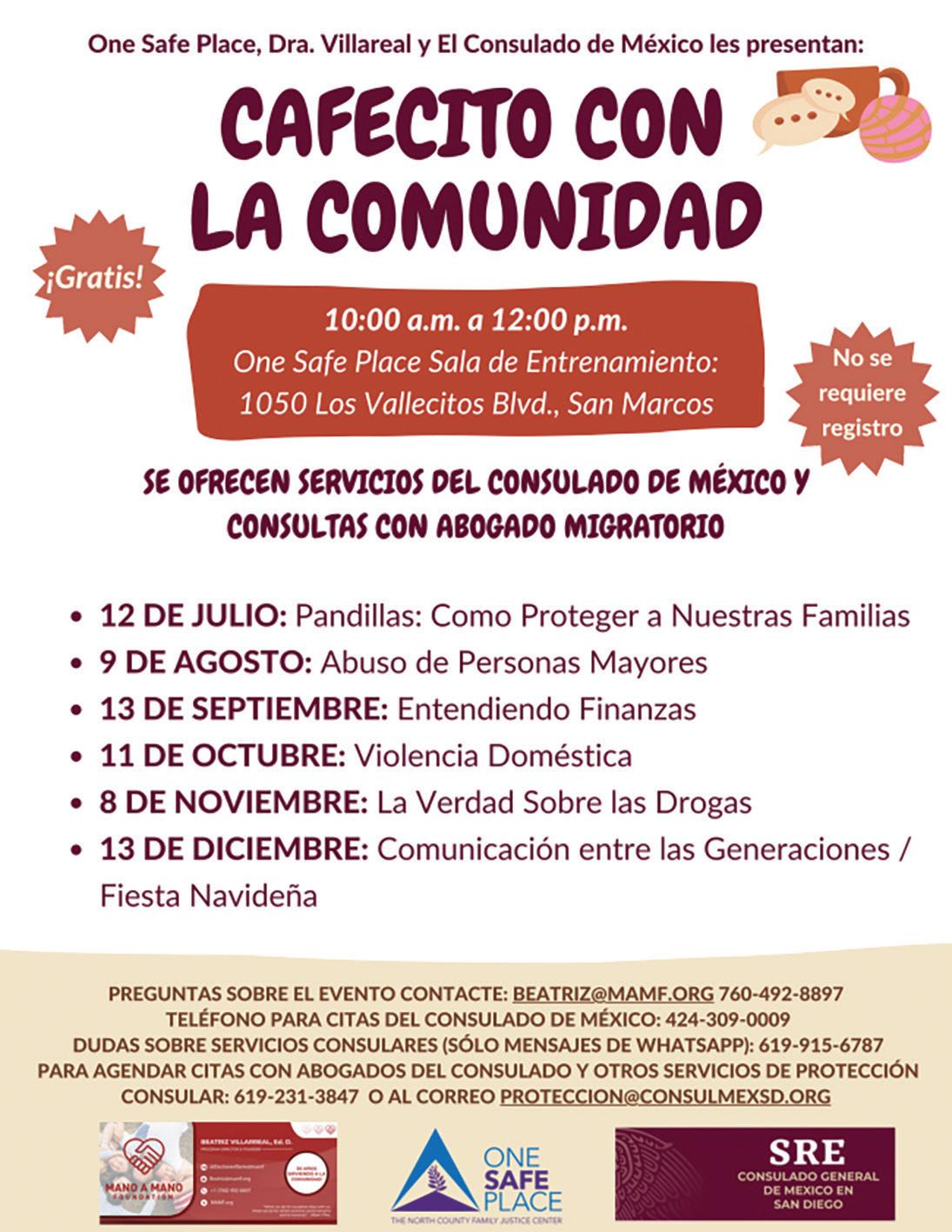
- Opening Remarks from / Bienvenida de Dr. Star Rivera Lacey, President of Palomar College; from Latina Elected Officials
- Keynote Speaker / Oradora principal: Veronica De La Rosa, Executive VP of Operations for San Ysidro Health
- Main Panel: Latina Leaders discussing key issues / Líderes latinas platican de temas clave
Back to School Rally by NAACP Listos para las clases presentado por NAACP
- August 3, 11 am–1 pm
- MiraCosta College
- 1 Barnard Dr., Oceanside
- Mochilas, útiles escolares, juegos para la familia gratis
- Free backpacks, school supplies, family games
National Night Out, 4–8 p.m. Meet your sheriff departments / Conozcan a los sheriffs
- Fallbrook: Alvarado St. & North Main Avenue
- San Marcos: 182 Santar Place
- Valley Center Middle School, 28102 North Lake Wohlford Rd.
- Vista: 200 Civic Center Dr.
- Oceanside: 3855 Misson Ave.
Cafecito con la Comunidad
- Con la Dra.Villarreal
- En español
- 9 de agosto: Abuso de personas mayores
- 13 de septiembre: Entendiendo finanzas
- 11 de octubre: Violencia doméstica
- 8 de noviembre: La verdad sobre las drogas
- 13 de diciembre: Comunicación entre las generaciones/Fiesta navideña
- Presencia del Consulado de México; Citas: 424-309-0009
- Abogados del Consulado y otros servicios de protección consular: proteccion@consulmexsd.org
- One Safe Place, 10 a.m.
- 1050 Los Vallecitos Blvd., San Marcos
- 760-492-8897
Flourish & Nourish Health Fair & Breast Milk Drive
Feria de salud y recolecta de leche materna
- August 10, 10 am–1 pm
- TrueCare Mission Mesa Campus
- 2210 Mesa Dr., Oceanside
Free Credit Workshop
Taller gratuito de crédito
- One Safe Place
- Register / Para inscribirse: 760-290-3690
- August 13; September 10; October 8
Universidad Popular presenta Cultivando Liderazgo
- Todos los miércoles, 6–7:30 p.m.
- Salón de Universidad Popular
- 261 Autumn Dr., Suite 115
- San Marcos, CA
Programa de Ciudadanía Citizenship Classes
- Tuesdays, 5–6 pm English
- Todos los martes, 6–7 pm, español
- San Marcos Elementary MultiPurpose Room
- 1 Tiger Way, San Marcos
Volume 4, Issue 38 // August 2024
On the cover: Bea Palmer is an inspiration to her community.
Photo: Adrianna Furtado, Operation Hope-North County
Scan to subscribe to NCI and see past issues: North County Informador is a digital weekly and monthly ePub or print issue.

Empowering Latino Futures presents the North County Informador Team www.NorthCountyInformador
Editor: Melanie Slone, PhD editor@NorthCountyInformador.com
Art Director: María Fernanda Álvarez
Education Begins in the Home Program Director: Edward Becerra
ELF Office Coordinator: Melissa Lopez
ELF Office Assistant: Galilea Flores Hernandez
Tech Support: Marc Perez
Sacramento Coordinator: Rene Aguilera
Publisher: Kirk Whisler
To advertise: Melissa Lopez, melissaL1632@gmail.com, 760-458-7568
North County Informador Advisory Board
Gaby Beas, MiraCosta College; Edward Becerra, Education Begins in the Home; Jacqueline “Kiki” Bispo, Vista Unified School District; Adriana Brunner, Chase; Jonathan Gomez, MiraCosta College; Monica Martinez, North County Philanthropy Council; Arcela Nuñez Alvarez, Universidad Popular; Maria Nuñez, Universidad Popular; Alejandro Tamayo, San Diego County Office of Education; Dr. Rafe Edward Trickey, Jr, North San Diego County Promise; Victoria Vazquez, MAAC; Leticia Vera, TrueCare; Beatriz Villareal, Mano a Mano Foundation, Deysi B. Merino, VCC
Please email editor@NorthCountyInformador.com if you are interested in being a part of this effort.
Nonprofits, publish content through us. We accept English, Spanish, or both.
Civic Engagement, Community Services, Cultural Events, Education, Financial Empowerment, Food Security, Government Services, Health Services, Immigration Services, Information on Access to Essential Services, Community Events
Send material to: editor@northcountyinformador.com All materials are copyrighted by Empowering Latino Futures, a 501c3 nonprofit and the parent organization of North County Informador.
Empowering Latino Futures Board
Edward James Olmos, Chair Kirk Whisler, Presdient
Katharine A. Diaz, Author VP
Andres Tobar, Education VP
Lisa Montes, Secretary
Dennis Garcia, Treasurer
BOARD MEMBERS
Julia Abrantes, Edward Becerra, Victoria Chavez, Norma Jasso, Esther Reyes Jones, Leticia Ordaz
ELF Emeritus Board Members
Nora de Hoyos Comstock, PhD; Dennis Hernandez; Zeke Montes; Ambassador Julian Nava; Jesus Nieto, PhD; Martin Valdez
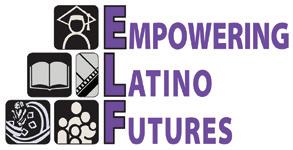
Scan




Flourish & Nourish Health Fair & Breast Milk Drive
- August 10
- 10 am – 1 pm
- Truecare Mission Mesa Campus
- 2210 Mesa Drive, Oceanside
Join TrueCare for their annual family-friendly health fair and breast milk drive with free goodies for attendees and fun activities for the kids!
- Food Distribution (while supplies last)
- Activities for Kids
- Breast Milk Drive
- Dental Screenings/Fluoride Varnish
- Health Screenings
- Blood Drive Benefiting the San Diego Blood Bank
- And More!

Feria de salud Flourish & Nourish y colecta de leche materna
¡Únase a TrueCare para su feria anual de salud familiar y su campaña de recolección de leche materna con obsequios para los asistentes y actividades divertidas para los niños!
- Distribución de comida*
- Actividades para niños
- Campaña de leche materna
- Exámenes dentales/barniz de flúor
- Exámenes de salud
- Donación de sangre en beneficio del Banco de Sangre de San Diego
- ¡Y más!
*mientras duren las reservas.
- August 21: National Fentanyl Prevention & Awareness Day
- August 31: International Overdose Awareness Day
The addition of fentanyl to counterfeit pills and powders has increased opioid overdose deaths, says the San Diego Opioid Project. Naloxone is a life-saving medication that works to rapidly reverse an opioid overdose and restore normal breathing. https://www.sandiegoopioidproject.com/ instant-death#learn
How can you recognize an overdose?
- A Awareness: A person is unresponsive and won’t wake up.
- B Breathing: A person’s breath is slow or absent, or they are making choking or gurgling sounds.
- C Color: The person’s lips, skin, or fingertips are pale or blue.
If you suspect an overdose:
- 1 Call 9-1-1 immediately.
- 2 Administer Naloxone.
- 3 Start rescue breathing or hands-only CPR.
- 4 Stay with them until emergency services arrive.

Donate Breast Milk
Share the benefits and help a baby thrive. In partnership with university of California Health Milk Bank, TrueCare is hosting a breast milk drive during the health fair to collect nutritious human donor milk to babies in need.
If you are nursing mom with extra milk, the donor enrollment process is easy and online—get started before you come! register at the https://uchealth.service-now. com/csp
Donar leche materna
- Compartan los beneficios y ayuden a un bebé a prosperar. En asociación con el Health Milk Bank de la Universidad de California, TrueCare está organizando una campaña de recolección de leche materna durante la feria de salud para recolectar leche nutritiva de donantes humanos para bebés necesitados.
- Si usted es mamá lactante y tiene leche adicional, el proceso de inscripción de donantes es fácil y está en línea. Regístrese en https://uchealth.service-now.com/csp
- La adición de fentanilo a las píldoras y los polvos falsificados ha aumentado las muertes por sobredosis de opioides, reporta el San Diego Opioid Project.
- La naloxona es un medicamento que salva vidas y funciona para revertir rápidamente una sobredosis de opioides y restaurar la respiración normal.
Si hay sospecha de sobredosis:
- C Conciencia: Una persona no responde y no se despierta.
- R Respiración: La respiración de una persona es lenta o ausente, o está haciendo sonidos de asfixia o gorgoteo.
- C Color: Los labios, la piel o las yemas de los dedos de la persona están pálidos o azules.
- ¿qué debe hacer si sospecha una sobredosis?
- 1 Llame al 9-1-1 inmediatamente.
- 2 Administre Naloxona.
- 3 Inicie respiración de rescate o RCP con manos solamente.
- 4 Quédese con la persona hasta que lleguen los servicios de emergencia.
SITES IN NORTH COUNTY TO GET NALOXONE FOR FREE / SITIOS EN EL NORTE DE CONDADO PARA CONSEGUIR NALOXONA GRATIS
Pala Reservation
- 34884 lilac extension Rd, Pala
Acadia Health Oceanside
- 1905 Apple St., Ste 3, Oceanside
- 1-888-narcan-0 (1-888-627-2260)
- harmreduxsd@gmail.com
County of San Diego Regional
Public Health Centers
- 3609 Ocean Ranch Blvd, Ste 104, Oceanside
- 760-967-4401
- 649 West Mission Avenue, Suite 2, Escondido
- 760-740-3000
For more information or to request a Pros & Cons presentation or Candidate Forum, please visit the LWVNCSD website / Para información o para pedir una presentación de Pros y Contras, favor de visitar: https://lwvncsd.org/content.aspx?page_id=5&club_ id=730504&item_id=103496& voterservices@lwvncsd.org
The League of Women Voters of North County San Diego (LWVNCSD) is scheduling community forums to educate voters about candidates for local races and ballot propositions in preparation for the November 5 General Election.
Presentations called Pros & Cons provide a nonpartisan summary of each state and local ballot initiative, including explanations about their financial impact, a list of the proposition’s key supporters and opponents, and information about financial contributions made to support or oppose the proposition.
In partnership with community organizations, LWVNCSD also provides nonpartisan Candidate Forums conducted by trained moderators. The public, the audience, and any sponsoring organizations are invited to submit questions for the participating candidates.
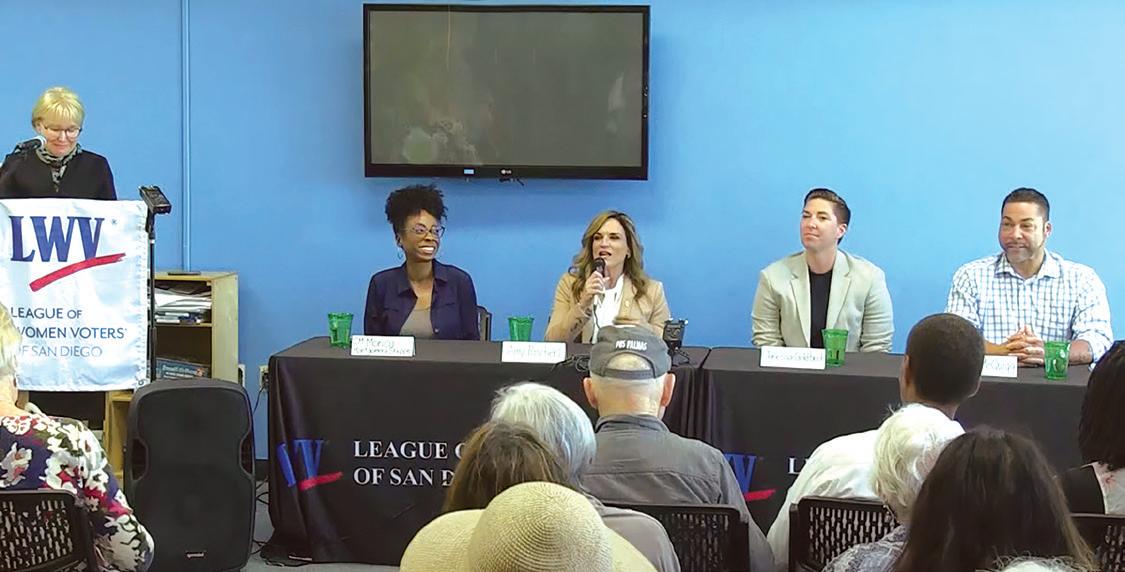
La Liga de Mujeres Votantes del Norte del Condado de San Diego invita a grupos cívicos locales a programar foros de educación para votantes
La Liga de Mujeres Votantes del Norte del Condado de San Diego (LWVNCSD) está programando foros comunitarios para educar a los votantes sobre los candidatos para las elecciones locales y las propuestas electorales en preparación para las elecciones generales del 5 de noviembre.
Las presentaciones llamadas Pros y Contras brindan un resumen no partidista de cada iniciativa electoral estatal y local, que incluye explicaciones sobre su impacto financiero, una lista de los principales partidarios y oponentes de la propuesta e información sobre contribuciones financieras hechas para apoyar u oponerse a la propuesta.
En asociación con organizaciones comunitarias, LWVNCSD también ofrece foros de candidatos no partidistas, dirigidos por moderadores capacitados. Se invita al público, la audiencia y cualquier organización patrocinadora a enviar preguntas para los candidatos participantes.
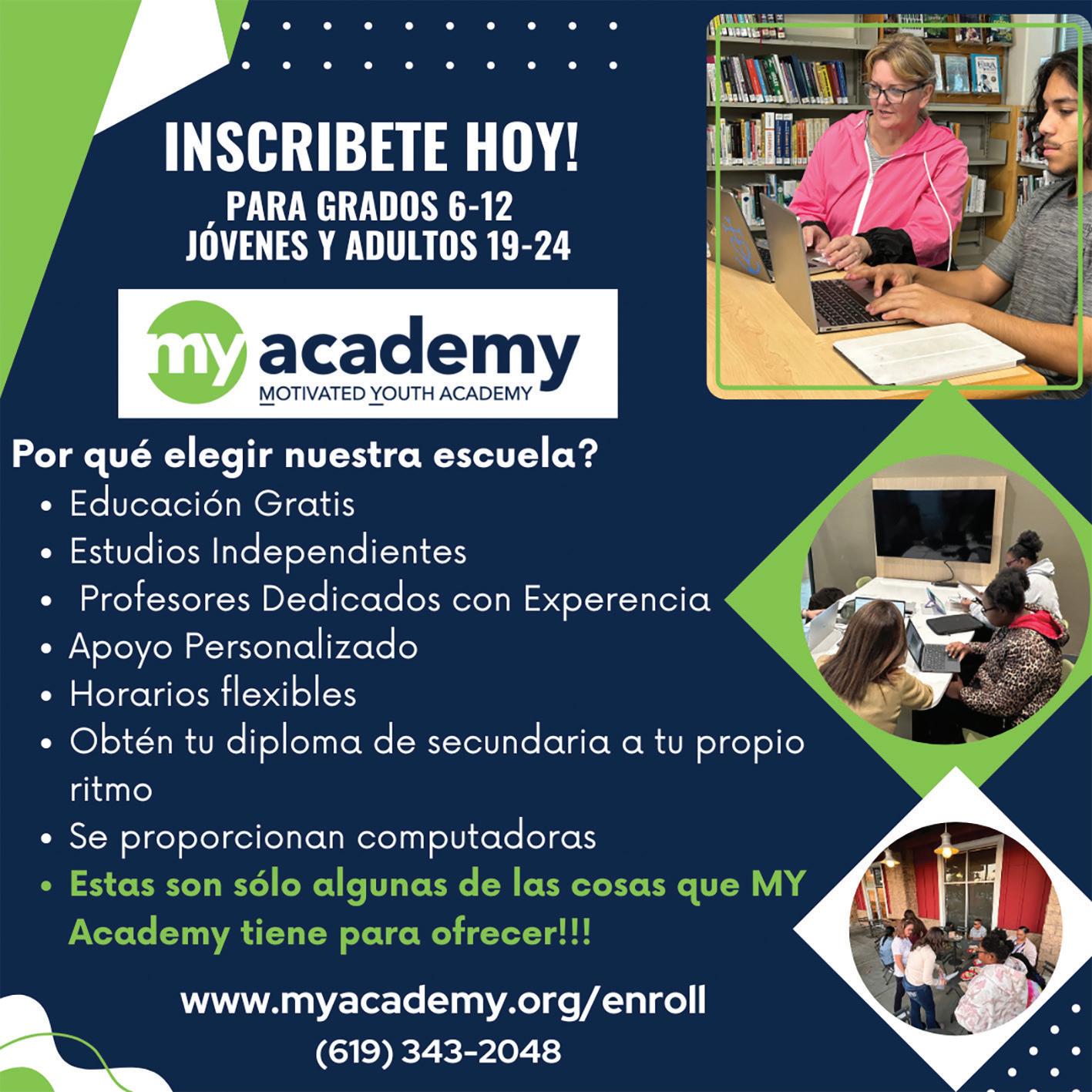


By Melanie Slone
North County Informador is offering this two-part series to help you buy a home. Look for Part II in December.
Homebuying can be a stressful undertaking, especially in San Diego, where prices are so high. But specialists say you shouldn’t give up on the dream. “If you want to buy a home, but you assume you won’t qualify, it’s worth a closer look,” says Ana Padilla, Vice President, Senior Business Growth Strategy Consultant Wells Fargo Home Lending, Diverse Segments, San Diego and Riverside, CA, and Las Vegas, NV.
Data from the US Census project that more than one in four Americans will be Latinos by 2060, and this group is expected to drive 70% of new home
ownership growth through 2040.
To join this group, Padilla says to remember that “purchasing a home is a significant investment and takes time. Taking time to understand the process and prepare your paperwork will make the process easier…Not all homebuying situations are alike, and complicated financial situations may require a little more legwork.”
It is imperative to understand US laws, says Zoraya De la Bastida, a realtor with eXp Realty. Don’t give money if you’re not clear about what is going on. She knows about a case where a woman lost $80,000 because
she didn’t understand the laws and tried to buy home on her own. The best way to protect yourself is to get professional help. “One of the most important things you can do is to enlist the help of a home mortgage consultant (who is bilingual, if needed) to discuss home financing options that may be the right fit for you as well as a local real estate agent who can help you understand what’s happening in the local housing market,” says Padilla. Ana Patiño, a homeowner in Vista, remembers when her family first thought about purchasing the house. “After investigating, you get
discouraged, so you stop talking about it,” she says. But then, her siblings went to an open house and met an agent. “You can do your searches online, but it’s different than having an actual real estate person telling you about it and getting you excited about it,” she says.
A real estate agent can help you come up with a strategy. They will also explain the benefits of home ownership, such as tax benefits, De la Bastida explains.
Meanwhile, it’s important to know what kind of payment you can manage so that you’re buying in a price range that is comfortable for you, Padilla notes. “It’s easy to get emotional about a home and want to buy at all costs, but keep the focus on the smart financial decisions you’ve made about budget and manageable payments.”
She says to think about buying a home as a series of financial tradeoffs you will need to make. “Most people don’t get their dream home right out of the gate. It’s usually a discussion of what’s the best possible home I can buy based on the budget I have.”
One of the most important factors when buying a home is understanding finance so you can get a good mortgage. “I’ve had customers who didn’t know what was in their credit report and are surprised at what we find,” says Padilla.
Patiño also mentions the importance of good credit. “That’s another measurement to see how stable your finances are.” If your credit is not so good, talk to a financial advisor right away to start improving it and working toward eventually buying that home.
Income is another factor, but Padilla says not to assume it has to be high. “The key is demonstrating your ability
to repay the loan,” she explains. “Lenders look at a variety of factors, including your income, assets, the percentage of your monthly income that goes to debt payments, credit history, credit scores, and the amount of the loan compared to the value of the property.”
To get help with these financial matters, the best option is to talk with mortgage lenders and find one that makes you feel comfortable.
“You can work with a lender online or face-to-face,” says Padilla. “Work with a trusted lender who will take the time to guide you through the process. Don’t be afraid to shop around for a full-service provider who can offer guidance.”
Patiño also suggests looking for the right people to help you. “Don’t depend on one person’s opinion. Talk to other people who have gotten a home. Even with this economy, homebuying is still a possibility,” she says.
- Understand what’s in your credit history so you’re realistic while shopping for a home. One late payment in your past can affect your credit score, which can affect your interest rate or the amount you can borrow.
- Get prequalified with a lender to determine your price range.
- Check your credit report regularly to reveal any errors so you can get them corrected. Once a year, you can get a free copy of your credit report from each of the three credit bureaus at www.annualcreditreport.com. More and more financial institutions are also providing credit scores to customers.
- Look for a lender who has a breadth of products and services and can offer the right options for your situation, as well as the convenience of digital tools.
- Talk with your home mortgage consultant about your goals and what financial options might work best for you. Are you looking for the lowest possible payment or is your biggest concern the lowest possible closing costs?


By Melanie Slone
Comprar una vivienda puede ser una tarea estresante, especialmente en San Diego, donde los precios son muy altos. Pero los especialistas dicen que no hay que renunciar al sueño. “Si desea comprar una casa, pero supone que no calificará, vale la pena examinarla más de cerca”, dice Ana Padilla, vicepresidenta y consultora senior de estrategia de crecimiento empresarial de Wells Fargo Home Lending, segmentos diversos, San Diego y Riverside, CA y Las Vegas, NV.
Los datos del Censo proyectan que más de uno de cada cuatro estadounidenses serán latinos para 2060, y se espera que este grupo impulse el 70% del crecimiento de la propiedad de viviendas nuevas hasta 2040.
Para sumarse a este grupo, Padilla pide recordar que “adquirir una vivienda es una inversión importante y lleva tiempo. Tomarse el tiempo para comprender el proceso y preparar su documentación hará que el proceso sea más fácil... No todas las situaciones de compra de una vivienda son iguales, y las situaciones financieras complicadas pueden requerir un poco más de trabajo preliminar”.
Es imperativo comprender las leyes estadounidenses, dice Zoraya De la Bastida, agente inmobiliaria de eXp Realty. No den dinero si no tienen claro lo que está pasando. Conoce un caso en el que una mujer perdió 80 mil dólares porque no entendía las leyes y trató de comprar una casa por su cuenta.
La mejor manera de protegerse es buscar ayuda profesional. “Una de las cosas más importantes es contar con la ayuda de un asesor hipotecario (que sea bilingüe, si es necesario) para analizar las opciones de financiamiento de viviendas que puedan ser adecuadas para usted, así como de un agente de bienes raíces local que puede ayudarle a comprender lo que está sucediendo en el mercado inmobiliario local”, dice Padilla. Ana Patiño, propietaria de una casa en Vista, recuerda cuando su familia pensó por primera vez en comprar. “Después de investigar, te desanimas y dejas de hablar del tema”, afirma. Pero entonces, sus hermanos fueron a una casa en venta y conocieron a un agente. “Puedes hacer tus búsquedas
en línea, pero es diferente a que una persona real de bienes raíces te hable y te entusiasme”, dice.
Un agente de bienes raíces puede ayudarlo a idear una estrategia. También explicarán los beneficios de ser propietario de una vivienda, como los fiscales, explica De la Bastida.
Mientras tanto, es importante saber qué tipo de pago puede gestionar para comprar en un rango de precios que le resulte cómodo, señala Padilla. “Es fácil emocionarse con una casa y querer comprarla a toda costa, pero manténgase enfocado en las decisiones financieras inteligentes que ha tomado sobre el presupuesto y los pagos manejables”.
Sugiere pensar en comprar una casa como una serie de compensaciones financieras que deberá hacer. “La mayoría de las personas no consiguen la casa de sus sueños desde el primer momento. Generalmente se trata de una discusión sobre cuál es la mejor casa posible que puedo comprar según el presupuesto que tengo”.
Uno de los factores más importantes a la hora de comprar una casa es entender las finanzas para poder conseguir una buena hipoteca. “He tenido clientes que no sabían lo que había en su informe crediticio y se sorprenden de lo que encontramos”, dice Padilla. Patiño también menciona la importancia
del crédito. “Esa es otra medida para ver qué tan estables son sus finanzas”. Si su crédito no es tan bueno, hablen con un asesor financiero de inmediato para comenzar a mejorarlo y trabajar para eventualmente comprar esa casa.
Los ingresos son otro factor, pero Padilla dice que no debemos asumir que tienen que ser altos. “La clave es demostrar su capacidad para pagar el préstamo”, explica. “Los prestamistas analizan una variedad de factores, incluidos sus ingresos, activos, el porcentaje de sus ingresos mensuales que se destinan a pagos de deuda, historial crediticio, puntajes crediticios y el monto del préstamo en comparación con el valor de la propiedad”.
Para obtener ayuda con estos asuntos financieros, la mejor opción es hablar con prestamistas hipotecarios y encontrar uno que le dé confianza.
“Puede trabajar con un prestamista en línea o cara a cara”, dice Padilla. “Trabaje con un prestamista confiable que se tomará el tiempo para guiarlo a través del proceso. No tenga miedo de buscar un proveedor de servicios completos que pueda ofrecerle orientación”.
Patiño también sugiere buscar a las personas adecuadas para que le ayuden. “No dependan de la opinión de una sola persona. Hablen con otras personas que hayan conseguido una casa. Incluso con esta economía, la compra de una vivienda sigue siendo una posibilidad”, afirma.

- Comprenda lo que hay en su historial crediticio para ser realista al comprar una casa. Un pago atrasado en el pasado puede afectar su puntaje crediticio, lo que puede afectar su tasa de interés o la cantidad que puede pedir prestada.
- Obtenga una precalificación con un prestamista para determinar su rango de precios.
- Revise su informe de crédito periódicamente para descubrir cualquier error y poder corregirlo. Una vez al año, puede obtener una copia gratuita de su informe crediticio de cada una de las tres agencias de crédito en www. annualcreditreport.com. Cada vez más instituciones financieras también ofrecen calificaciones crediticias a los clientes.
- Busque un prestamista que tenga una variedad de productos y servicios y pueda ofrecer las opciones adecuadas para su situación, así como la conveniencia de las herramientas digitales.
- Hable con su asesor hipotecario sobre sus objetivos y qué opciones financieras podrían funcionar mejor para usted. ¿Está buscando el pago más bajo posible o su mayor preocupación son los costos de cierre más bajos posibles?

Al comprar una casa, se puede obtener una hipoteca de un banco o una cooperativa de crédito.
Consulte las tasas de interés y otros servicios cuando desee obtener una hipoteca. El proceso es el mismo ya sea que recurra a un banco o a una cooperativa de crédito, pero las cooperativas de crédito se centran más en la comunidad.
“En Cal Coast, una de nuestras prioridades estratégicas es empoderar a las comunidades desatendidas a través de la inclusión financiera. Por eso, hemos ampliado nuestro alcance para apoyar la Promise Zone de la ciudad de San Diego con recursos gratuitos de bienestar y educación financiera, un Centro de Bienestar Financiero gratuito y planes para abrir una sucursal física en esa área. Esto es parte de nuestra misión y creemos que la retribución tendrá un impacto duradero en nuestra comunidad”, dijo el presidente y director ejecutivo de California Coast Credit Union, Todd Lane. Los bancos están asegurados por la Corporación Federal de Seguro de Depósitos (FDIC) y las cooperativas de crédito están aseguradas por la Administración Nacional de Cooperativas de Crédito (NCUA). Ambas son aseguradoras federales, por lo que su dinero está seguro en cualquier tipo de institución. Puede verificar si una cooperativa de crédito está asegurada federalmente según la NCUA: https://mapping.ncua.gov/
BANCOS Y COOPERATIVAS DE CRÉDITO
- Las cooperativas de crédito son organizaciones sin fines de lucro propiedad de sus miembros y controladas por ellos, por lo que pueden ofrecer tasas de interés más bajas sobre las hipotecas. Los bancos operan con fines de lucro, por lo que las tasas pueden ser más altas.
- Las cooperativas de crédito requieren membresía según varios criterios.
- Las cooperativas de crédito generalmente ofrecen tarifas de proceso y originación, tarifas de solicitud, costos de cierre de hipotecas o tasas de interés más bajas. Puede ser más fácil obtener la aprobación para un préstamo en una cooperativa de crédito, especialmente si tiene un puntaje crediticio más bajo.
- El servicio en las cooperativas de crédito tiende a ser más personalizado u orientado a la comunidad.
- Los bancos tienen más sucursales y más cajeros automáticos, incluso fuera del condado, aunque muchas cooperativas de crédito forman parte de redes de cajeros automáticos.
- Muchas cooperativas de crédito no tienen servicio telefónico o de transferencias durante los fines de semana o días festivos.
- Los bancos suelen ofrecer más tipos de programas hipotecarios.
- Las cooperativas de crédito no pueden realizar transferencias bancarias internacionales. Deben pasar por otra empresa o por un banco.

When purchasing a home, you can get a mortgage from a bank or a credit union. Check around for interest rates and other services when looking to take out a mortgage. The process is the same whether you go through a bank or a credit union, but credit unions focus more on the community.
“At Cal Coast, one of our strategic priorities is to empower underserved communities through financial inclusion. That is why we’ve expanded our outreach to support the City of San Diego’s Promise Zone with free financial literacy and wellness resources, a free Financial Wellness Center, and plans to open a brick-andmortar branch in that area. This is part of our mission, and we believe giving back will have a lasting impact on our community,” said California Coast Credit Union President & CEO Todd Lane. Banks are insured by the Federal Deposit Insurance Corporation (FDIC), and credit unions are insured by the National Credit Union Administration (NCUA). Both are federal insurers, so your money is safe in either type of institution. You can check if a credit union is federally insured under NCUA: https://mapping.ncua.gov/
- Credit unions are not-for-profit organizations owned and controlled by their members, so they can offer lower interest rates on mortgages. Banks operate for profit, so the rates may be higher.
- Credit unions require membership based on varying criteria.
- Credit unions usually offer lower process and origination fees, application fees, closing costs on mortgages, or interest rates. It may be easier to be approved for a loan at a credit union, especially if you have a lower credit score.
- Service at credit unions tends to be more personalized or community oriented.
- Banks have more branches and more ATM machines, including outside the county, although many credit unions are part of ATM networks.
- Many credit unions have no wire or phone service on the weekend or holidays.
- Banks often offer more types of mortgage programs.
- Credit unions cannot do international wire transfers. They must go through another company or through a bank.
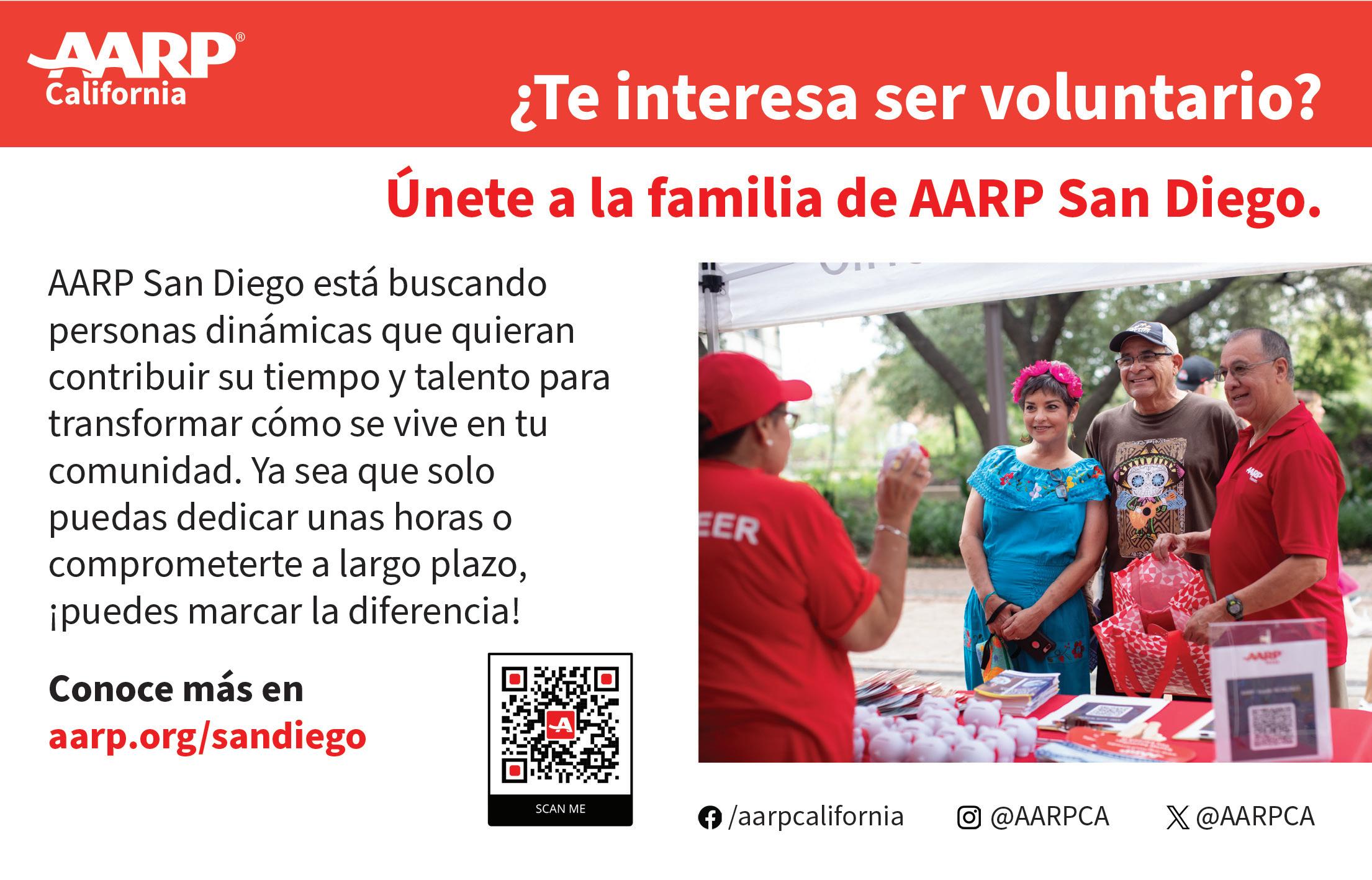
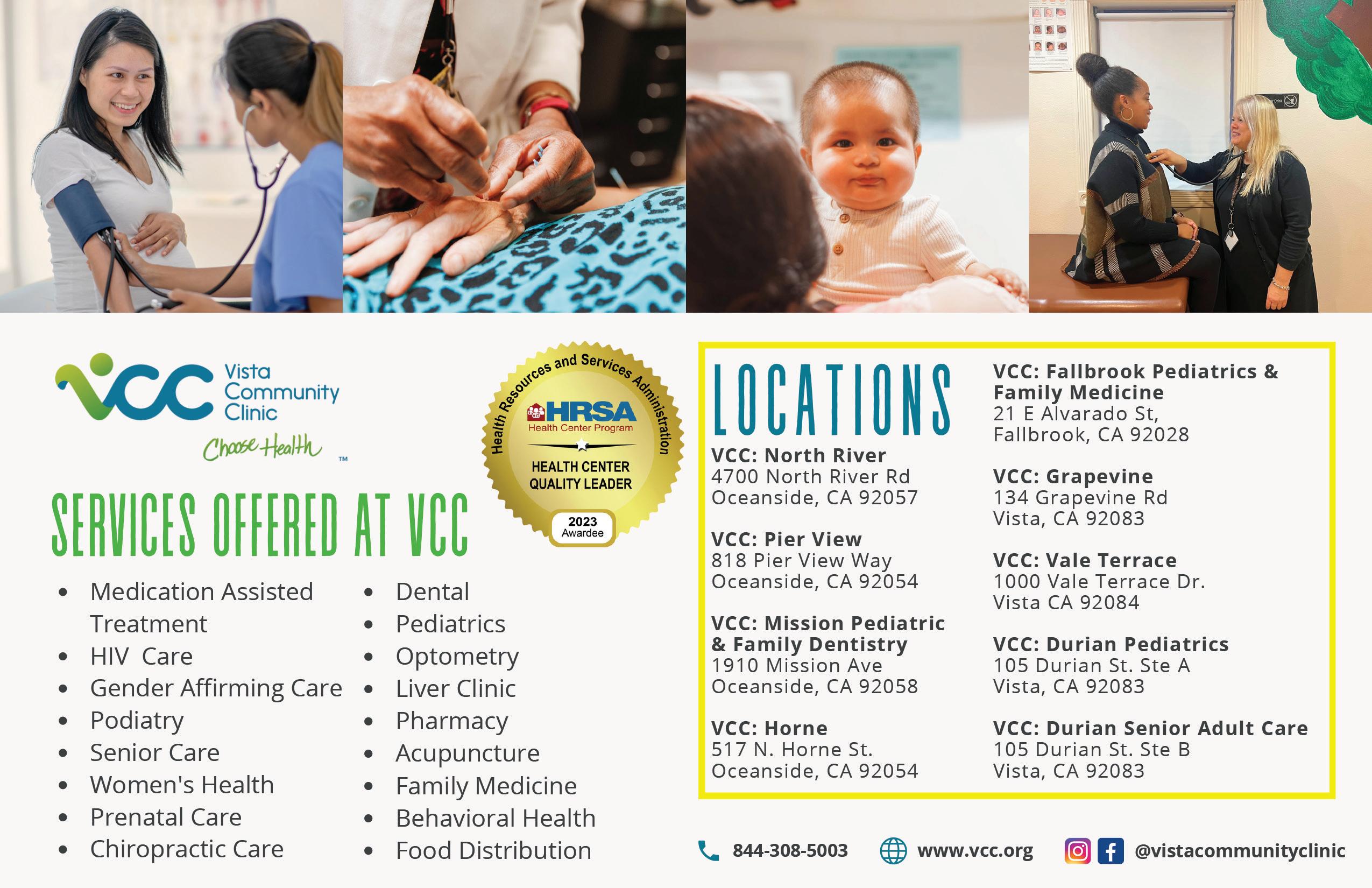
By Melanie Slone
Read about Operation Hope-North County: https://operationhopeshelter.org/
“If you don’t have a seat at the table, you might be on the menu. And if there is no table, don’t be afraid to create your own,” says Beatriz “Bea” Palmar, who has followed her own advice.
Bea’s parents worked in the fields, and her father struggled with addiction. “We were often housing insecure. By the time I reached high school, we had moved probably 25 times.” Yet, she never considered herself as homeless. “Until you learn that homelessness is also housing insecurity. And we were very housing insecure,” she says.
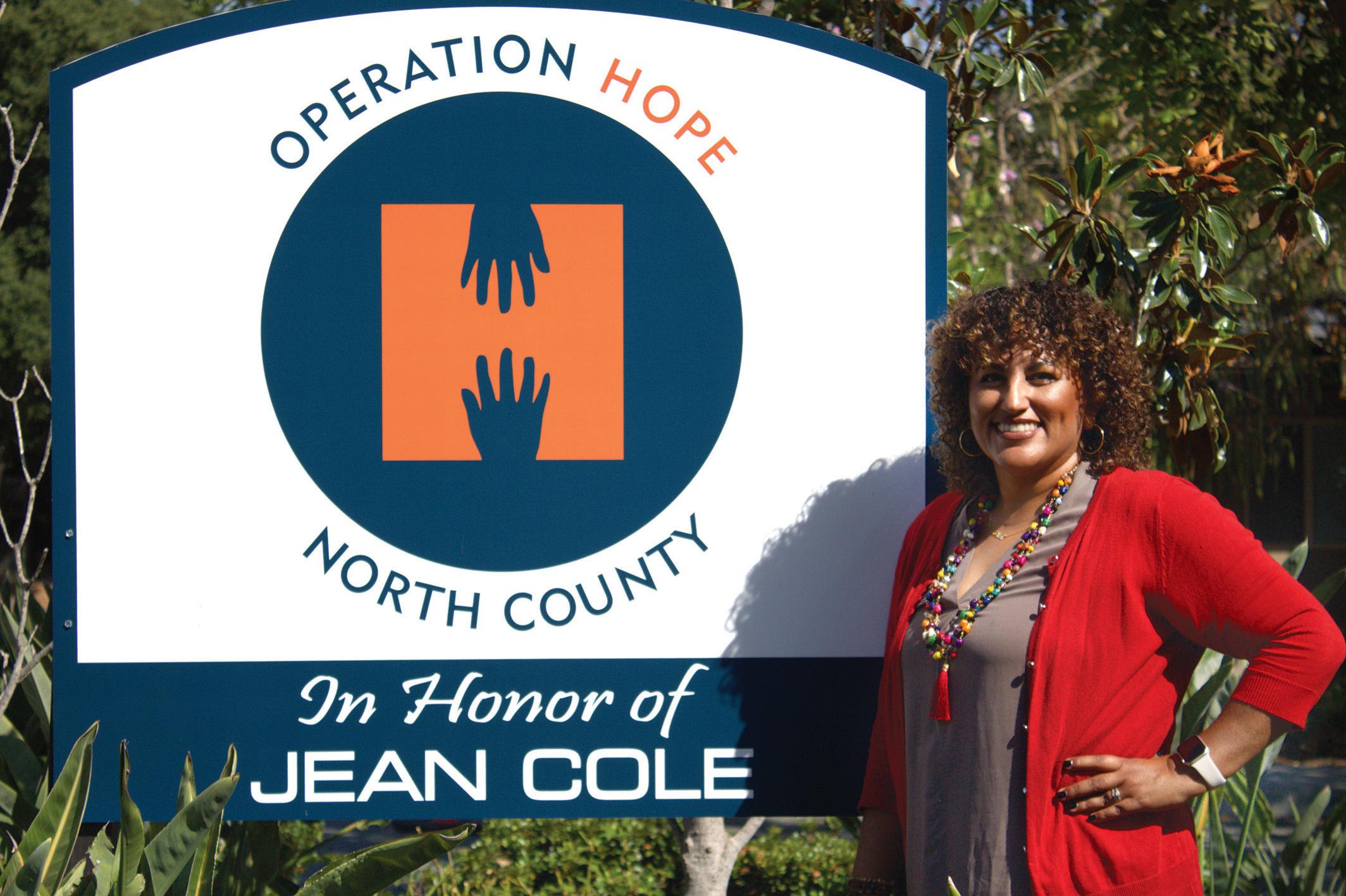
“Education, while it may not be the solution to everything, propels us forward to break through a lot of those symptoms of poverty,” she adds.
Bea came to the United States with her family from Guadalajara, Jalisco, Mexico, before she turned two. Today, she is the acting executive director at Operation Hope-North County and the director of the Federal Grant for Full-service Community Schools with National University’s Sanford College of Education.
Bea is grateful for the assistance she received through Migrant Education. She remembers when she was in high school and Señora Sara Rivera, the mother of Palomar College’s current president and superintendent Dr. Star Rivera-Lacey, visited her mom. “She said, Beatriz is not finishing her homework. And she sat at the foot of my bed. She brought me the book
and she would not leave until I read chapters and got some writing done.”
Mrs. Rivera and many other counselors helped her become the first in her family to graduate from high school.
After dropping out of MiraCosta, she eventually returned there to work. Her boss at the time, Dr. Carol Wilkinson, encouraged her to go for her degree.
She and her husband went back to schools as adults, “and that’s how we were able to get our family out of poverty,” she says. “We were housing insecure. We were actually homeless. My mom took us in,” she remembers. “We were able to purchase our home through the VA and because we had an education that allowed us to have jobs that paid a little more.”
At MiraCosta, Bea began doing classroom presentations and helping place students for service work in the community. “I knew how to do that. I felt really
confident because I’m a product of the community,” she says. Eventually, she became the program manager for the service learning and volunteer program.
She later completed her bachelor’s degree, and then a master’s in sociology, which allows her to teach the subject. “When I have to teach about inequality and systems of oppression and the structures of our society, I know it because I come from a disproportionately impacted community.”
Having gone through housing insecurity, Bea says her work with Operation Hope is dear to her heart. “Operation Hope is a year-round shelter for families with children and single women who are experiencing homelessness…families that grow up with housing insecurity carry a lot of trauma,” she says.
Families at Operation Hope work with a case manager to craft small, measurable goals. “Maybe a family doesn’t have an identification. Maybe the children aren’t enrolled in school. …They start attending parenting classes, financial literacy classes, and then they set other goals, personal goals, professional goals,” Bea explains. They can also get connected with a mental health provider and with job training.
“If we really think about it, most of America is just a few paychecks away from being in the same situation that the families at Operation Hope-North County fall into,” says Bea, adding that friends may not even realize it when someone is housing insecure. “They could be the kids who your kids go to school with. They could be somebody at church….63% of our clients on most nights are children and youth.”
As with all nonprofits, Operation Hope, which is a highbarrier shelter, suffers from a lack of funding, getting only 35% from the government. “If the father or the mother is actively in drug addiction, we can’t take them. We want to provide a safe shelter,” Bea explains.
“It is hard work, but it’s such a great feeling to know that you’re part of an organization that isn’t just providing shelter but also a safe place for them to lay their head down and know that they’re safe.”
Bea talks about the increase in homelessness, particularly the growing trend among seniors. “They’re calling them the gray tsunami or the gray wave.”
And there are many children. “Families don’t have access to affordable housing, which is why our cities need to focus on developing truly affordable housing for families and for our elderly.”
Meanwhile, Operation Hope addresses homelessness holistically. People can keep their jobs and continue attending school while in the shelter. “That’s how they’re going to push through the symptoms of poverty, through education,” says Bea. “I know that’s what helped me.”
Bea is very involved in racial and social justice initiatives. In January of this year, she was the first Afro Indigenous Latina recipient of the Oceanside Martin Luther King Community Service Award.
She says one in five Latinos has roots in Africa. “When you’re a Black Latina, sometimes it’s a struggle to fit in even within your own community. We have a lot of work to do. Just like there’s colorism within the Black community, we have colorism within the Latino community,” she says. “I hope that through education, through community engagement, we can start breaking down those stereotypes.”
As the chair for women with the National Association for the Advancement of Colored People (NAACP) in the North County, Bea fights to expose people to culture, different ethnicities, and diversity. “This is one of the oldest civil rights organizations in the United States,” she says.
The word Colored in the organization’s name doesn’t just stand for Black African Americans. “Thanks to the work of the leaders of the NAACP, Latinos have the right to vote, women have the right to vote, our LGBT community has rights. “Dr. King did a lot of work with César Chávez…We have to work and move together,” Bea adds.
Bea has a favorite saying: “Don’t forget where you came from, but never lose sight of where you’re going.” Following that advice, she says she never forgets the sacrifices her parents made living undocumented and not knowing how to read and write. “Those are the stories that give hope to other people.”
She encourages everyone to use their voice for power. “Speak up. And if you speak two languages, be proud of your heritage. Be proud of your identity. And don’t be afraid to learn about others so you can dismantle your own stereotypes and grow as an individual.”
She encourages everyone to dream big and find mentors. “Surround yourself with people that are going to encourage you and push you forward and open doors for you.”
Education is at the forefront for Bea. “If my mom had been afforded an opportunity to pursue her education, she would’ve been a business owner or a scientist, she knows soil and agriculture so well. And my father was a mechanic. And I think, he would’ve been an engineer.” She encourages all adults to take any courses they can. “Learn something new because that’s what going to help break down the generational trauma and poverty and help us leave a stronger legacy for our families.”
Finally, Bea is grateful for everyone who has helped her along the way. “I couldn’t have done it alone,” she says. “Build alliances. Build community with others because that’s what’s going to help you break through some of those barriers.”
By Melanie Slone
Lean sobre Operation Hope-North County: https://operationhopeshelter.org/
“Si no tienes un asiento en la mesa, es posible que estés en el menú. Y si no hay mesa, no temas crear la tuya propia”, afirma Beatriz “Bea” Palmar, quien ha seguido su propio consejo.
Los padres de Bea trabajaban en el campo y su padre luchaba contra la adicción. “A menudo no teníamos vivienda asegurada. Cuando llegué a la escuela secundaria, probablemente nos habíamos mudado 25 veces”. Sin embargo, ella nunca se consideró una persona sin hogar. “Hasta que aprendes que la falta de vivienda también es inseguridad habitacional. Y teníamos mucha inseguridad en materia de vivienda”, dice.
“La educación, si bien puede no ser la solución para todo, nos impulsa a superar muchos de esos síntomas de pobreza”, añade.
Plantar las semillas en la educación

Bea llegó a Estados Unidos con su familia desde Guadalajara, Jalisco, México, antes de cumplir dos años. Hoy en día, es directora ejecutiva interina de Operation Hope-North County y directora de la Subvención Federal para Escuelas Comunitarias de Servicio Completo de la Facultad de Educación Sanford en la Universidad Nacional.
Bea está agradecida por la ayuda que recibió a través de Educación Migrante. Recuerda cuando estaba en la high school y la señora Sara Rivera, madre de la actual presidenta y superintendente de Palomar College, la Dra. Star Rivera-Lacey, visitó a su madre. “Dijo, Beatriz no está terminando su tarea. Y ella se sentó a los pies de mi cama. Ella me trajo el libro y no se fue hasta que leí
Bea agradece a la Sra. Rivera y a muchos consejeros más que la ayudaron a convertirse en la primera de su familia en graduarse de la high school.
Después de darse de baja de MiraCosta, finalmente regresó allí para trabajar. Su jefa en ese momento, la Dra. Carol Wilkinson, la animó a obtener su título.
Bea y su esposo regresaron a la escuela cuando eran adultos, “y así pudimos sacar a nuestra familia de la pobreza”, dice. “Teníamos vivienda insegura. En realidad, éramos personas sin hogar. Mi mamá nos acogió”, recuerda. “Pudimos comprar nuestra casa a través del VA y porque teníamos una educación que nos permitió tener empleos que pagaban un poco más”.
En MiraCosta, Bea comenzó a hacer presentaciones en el aula y a ayudar a ubicar a los estudiantes para que realizaran trabajos de servicio en la comunidad. “Sabía
hacer eso. Me sentía muy segura porque soy un producto de la comunidad”, dice. Con el tiempo, se convirtió en directora del programa de voluntariado y aprendizaje-servicio.
Posteriormente completó su licenciatura, y más tarde una maestría en sociología, lo que le permite enseñar la materia. “Cuando tengo que enseñar sobre la desigualdad, los sistemas de opresión y las estructuras de nuestra sociedad, lo conozco porque vengo de una comunidad afectada desproporcionadamente”.
Ya que vivió la inseguridad de vivienda, Bea dice que su trabajo con Operation Hope es muy cercano a su corazón. “Operation Hope es un refugio abierto todo el año para familias con niños y mujeres solteras que se encuentran sin hogar... las familias que crecen con inseguridad habitacional cargan con muchos traumas”, dice.
Las familias de Operation Hope trabajan con un administrador de casos para elaborar metas pequeñas y mensurables. “Tal vez una familia no tenga identificación. Quizás los niños no estén matriculados en la escuela. … Empiezan a asistir a clases para padres, a clases de educación financiera, y luego se fijan otras metas, metas personales, metas profesionales”, explica Bea. También pueden conectarse con un proveedor de salud mental y con capacitación laboral.
“Si realmente lo pensamos, la mayor parte de Estados Unidos está a solo unos pocos pagos de estar en la misma situación en la que caen las familias de Operation Hope-North County”, dice Bea, y agrega que es posible que los amigos ni siquiera se den cuenta cuando alguien sufre inseguridad en la vivienda. “Podrían ser los niños con los que sus hijos van a la escuela. Podría ser alguien en la iglesia... El 63% de nuestros clientes la mayoría de las noches son niños y jóvenes”.
Como ocurre con todas las organizaciones sin fines de lucro, Operation Hope, que es un refugio con barreras altas, adolece de falta de financiación y solo recibe el 35% del gobierno.
“Si el padre o la madre son drogadictos activos, no podemos aceptarlos. Queremos ofrecer un refugio seguro”, explica Bea.
“Es un trabajo duro, pero se siente tan bien saber que eres parte de una organización que no solo les brinda refugio sino también un lugar seguro para que reposen la cabeza y sepan que están a salvo”.
Bea habla del aumento del número de personas sin hogar, en particular de la tendencia creciente entre las personas mayores. “Los llaman tsunami gris u ola gris”.
Y hay muchos niños. “Las familias no tienen acceso a viviendas asequibles, razón por la cual nuestras ciudades deben centrarse en desarrollar viviendas verdaderamente asequibles para familias y para nuestros ancianos”.
Mientras tanto, Operation Hope aborda la falta de vivienda de manera integral. Las personas pueden conservar sus trabajos y seguir asistiendo a la escuela mientras estén en el refugio. “Así es como van a superar los síntomas de la pobreza, a través de la educación”, dice Bea. “Sé que eso fue lo que me ayudó”.
Bea está muy involucrada en iniciativas de justicia social y racial. En enero de este año, fue la primera latina afro indígena en recibir el Premio al Servicio Comunitario Martin Luther King, de Oceanside.
Ella dice que uno de cada cinco latinos tiene raíces en África. “Cuando eres una latina negra, a veces es difícil encajar incluso dentro de tu propia comunidad. Tenemos mucho trabajo por hacer. Así como hay colorismo dentro de la comunidad negra, también lo tenemos dentro de la comunidad latina”, dice. “Espero que a través de la educación y la participación comunitaria podamos empezar a desmantelar esos estereotipos”.
Como presidenta de mujeres de la Asociación Nacional para el Avance de las Personas de Color (NAACP) en el norte del condado, Bea lucha para exponer a las personas a la cultura, las diferentes etnias y la diversidad. “Esta es una de las organizaciones de derechos civiles más antiguas de Estados Unidos”, dice.
La palabra Colored en el nombre de la organización no solo significa afroamericanos negros. “Gracias al trabajo de los líderes de la NAACP, los latinos tienen derecho a votar, las mujeres tienen derecho a votar, nuestra comunidad LGBT tiene derechos. “Dr. King trabajó mucho con César Chávez... Tenemos que trabajar y avanzar juntos”, añade Bea.
Bea tiene un dicho favorito: “No olvides de dónde vienes, pero nunca pierdas de vista hacia dónde vas”. Siguiendo ese consejo, dice que nunca olvida los sacrificios que hicieron sus padres al vivir indocumentados y sin saber leer ni escribir. “Esas son las historias que dan esperanza a otras personas”.
Ella anima a todos a usar su voz como signo de poder. “Hablen con fuerza. Y si hablan dos idiomas, siéntanse orgullosos de su herencia. Siéntanse orgullosos de su identidad. Y no tengan miedo de aprender sobre los demás para poder desmantelar sus propios estereotipos y crecer como individuos”.
Ella anima a todos a soñar en grande y encontrar mentores. “Rodéense de personas que los alienten, los impulsen hacia delante y les abran puertas”.
La educación es una prioridad para Bea. “Si a mi madre le hubieran brindado la oportunidad de continuar su educación, habría sido propietaria de un negocio o científica; conoce muy bien el suelo y la agricultura. Y mi padre era mecánico. Creo que habría sido ingeniero”. Ella anima a todos los adultos a tomar todos los cursos que puedan. “Aprendan algo nuevo porque eso ayudará a acabar con el trauma generacional y la pobreza y nos ayudará a dejar un legado más fuerte para nuestras familias”.
Finalmente, Bea agradece a todos los que la han ayudado en el camino. “No podría haberlo hecho sola”, dice. “Construyan alianzas. Construyan una comunidad con otros porque eso es lo que les ayudará a superar algunas de esas barreras”.
By Gordon Chavez, financial advisor
Have you ever thought about buying a home? It may seem overwhelming and is certainly a big step and a longterm commitment.
Many consider owning real estate the best way to start to build wealth. It can also be a great way to start building a foundation for generational wealth. If you or your parents are immigrants, you probably understand the idea of making big decisions for the benefit of future generations. Although you don’t even have to be a citizen to buy a home, there can be factors working against the Latino community, such as financial barriers, discrimination, and cultural aspects. Still, more and more Latino families are becoming homeowners. The National Association of Realtors reports that Hispanic homeownership rate reached 51.1% in 2022. Owning a home may seem like a pipedream, especially if your parents weren’t homeowners, like in Oscarin Ortega’s case.
“The conversation of home buying is not normal in my family, so I never thought it could be possible,” he says. “With the right guidance and plan, I was able to buy my first home under an FHA loan, proving that dreams are reachable.”
Even though it seemed impossible, he went for it, and now he is a proud homeowner. Guidance was key for him. You want to make sure that you’re working with reputable agents who will help you through the process.
According to Housing Wire, in the United States in 2023, 450,000 Latino households took on home ownership. The National Association of Hispanic Real Estate Professionals (NAHREP) notes that these homebuyers are more likely to trust professionals from their own communities who understand their cultural and financial behaviors. Consider these factors when deciding on a real estate agent. Believe you can do it and get prepared.

- Down payment and closing costs
- A lender/mortgage professional
- A real estate agent
- Your credit score
- Your debt-to-income ratio
- Preapproval for a loan, which is not the same as being prequalified
By Gordon Chavez, financial advisor
¿Alguna vez ha pensado en comprar una casa? Puede parecer abrumador y sin duda es un gran paso y un compromiso a largo plazo.
Muchos consideran que ser propietario de bienes raíces es la mejor manera de comenzar a generar riqueza. También puede ser una excelente manera de sentar las bases para la riqueza generacional. Si usted o sus padres son inmigrantes, probablemente comprendan la idea de tomar grandes decisiones en beneficio de las generaciones futuras. Aunque no es necesario ser ciudadano para comprar una casa, puede haber factores en contra de la comunidad latina, como barreras financieras, discriminación y aspectos culturales. Aun así, cada vez más familias latinas se están convirtiendo en propietarias de viviendas. La Asociación Nacional de
Agentes Inmobiliarios informa que la tasa de propiedad de viviendas entre hispanos alcanzó el 51.1% en 2022.
Ser propietario de una casa puede parecer una quimera, especialmente si sus padres no eran propietarios, como en el caso de Oscarín Ortega. “La conversación sobre la compra de una vivienda no es normal en mi familia, por lo que nunca pensé que fuera posible”, dice. “Con la orientación y el plan adecuados, pude comprar mi primera casa con un préstamo de la FHA, lo que demuestra que los sueños son alcanzables”.
Aunque parecía imposible, lo intentó y ahora es un orgulloso propietario. La orientación fue clave para él. Asegúrense de trabajar con agentes acreditados que lo ayudarán durante el proceso.
Según Housing Wire, en Estados Unidos en
2023, 450 mil hogares latinos adquirieron vivienda propia. La Asociación Nacional de Profesionales Hispanos de Bienes Raíces (NAHREP) señala que es más probable que estos compradores de viviendas confíen en profesionales de sus propias comunidades que comprenden sus comportamientos culturales y financieros. Considere estos factores al decidirse por un agente de bienes raíces. Tengan la mentalidad de que pueden hacerlo y prepárense.
LO QUE SE NECESITA
- Pago inicial y costos de cierre
- Un prestamista/profesional hipotecario
- Un agente de bienes raíces
- Su puntaje de crédito
- Su relación deuda–ingresos
- Preaprobación para un préstamo, que no es lo mismo que estar precalificado



Acción Climática

Protégela



Áreas P Parques




Salva Vidas Salva Vidas

El Agua Es Vida & Pesticidas

Detén los Productos Químicos Tóxicos






- Perjudica a todos nuestros órganos vitales
-Aumenta el riesgo de Asma, ataques y problemas cardiovasculares y pulmonares
-Demencia, Alzheimer y problemas cerebrales
-Diabetes
- Defectos al nacer, bebés prematuros y bajo peso

Through ELF’s Education Begins in the Home Program
Saturday, August 3, 9 a.m.–3 p.m.
- MANA Conference
- Palomar College, 1140 W. Mission Rd., San Marcos
Tuesday, August 6, 4–8 p.m.
- OPD National Night Out
- 3855 Mission Ave., Oceanside
Thursday, August 8
- Escondido USD Food Distribution
- 933 Farr Ave, Escondido
Friday, August 9, 10 a.m.–2 p.m.
- Palomar Health Fair
- Want to give out books at your events? // - Para regalar libros en sus eventos, Contact Edward Becerra: educationbeginsinthehome@gmail.com
Saturday, August 10, 10 a.m.–1 p.m.
- Boys & Girls Club Vista
- 410 W. California, Vista
Sunday, August 11 10 a.m.–2 p.m.
- Universidad Popular
- 200 E. Olive St., San Marcos
Read about it at https://ethnicmediaservices.org/education/one-yearafter-affirmative-action-is-overturned-whats-next-for-higher-ed/
Last year, the US Supreme Court overruled Affirmative Action after 45 years. Public and private institutions were prohibited from including race in considering which applicants to admit. Many institutions cut their Diversity, Equity and Inclusion (DEI) programs and stopped tracking admissions data by race.
This year there were also unprecedented delays and mistakes with the Free Application for Federal Student Aid (FAFSA). The deadline was moved from October 1 to December 31, 2023, and then the new application form had errors and miscalculations in determining financial aid.
According to Ethnic Media Services, several schools delayed enrollment commitment deadlines.
Many schools, including Yale, “cannot even tell us how FAFSA issues have impacted their admissions for minority applicants, because they separated their race and ethnicity data from the admissions data,” says Dr. Vikash Reddy, senior director of policy research at The Campaign for College Opportunity. In 2023, over 45 state bills targeting DEI funding were introduced nationwide, particularly in Texas and Florida. Meanwhile, California has outlawed the consideration of race in public education since 1996 under Proposition 209. After that, “many said the drop in Latino students was overstated. That was false, and will be false nationwide,” said Thomas A. Saenz, president and general counsel of the Mexican American Legal Defense and Educational Fund. “The Latino community is a younger, growing community. So, the number of college-eligible Latino students by age will dramatically increase in years to come, cushioning the data against a drop in admissions … it does not, however, mean that the impact is any less severe.”
- 649 W. Mission Ave., Escondido
Thursday, August 15, 9 a.m.–1p.m.
- North County Health Wellness Fair
Thursday, August 22, 9:30 a.m.–12:30 p.m.
- Fallbrook Food Pantry
- 140 N. Brandon Rd., Fallbrook
Los cambios a la Acción Afirmativa y los retrasos en FAFSA afectan a estudiantes de educación superior
El año pasado, la Corte Suprema de Estados Unidos anuló la Acción Afirmativa después de 45 años. A las instituciones públicas y privadas se les prohibía incluir la raza al considerar qué solicitantes admitir. Muchas instituciones recortaron sus programas de Diversidad, Equidad e Inclusión (DEI) y dejaron de rastrear los datos de admisión por raza.
Este año también hubo retrasos y errores sin precedentes con la Solicitud Gratuita de Ayuda Federal para Estudiantes (FAFSA). La fecha límite se trasladó del 1 de octubre al 31 de diciembre de 2023, y luego el nuevo formulario de solicitud tenía errores al determinar la ayuda financiera.
Según Ethnic Media Services, varias escuelas retrasaron los plazos de compromiso de inscripción.
Muchas escuelas, incluida Yale, “ni siquiera pueden decirnos cómo los problemas de FAFSA han impactado las admisiones de los solicitantes de minorías, porque separaron los datos de raza y etnia de los datos de admisión”, dice el Dr. Vikash Reddy, director senior de investigación de políticas de The Campaign for College Opportunity. En 2023, se introdujeron en todo el país más de 45 proyectos de ley estatales dirigidos a cortar la financiación de DEI, particularmente en Texas y Florida.
Mientras tanto, California ha prohibido la consideración de la raza en la educación pública desde 1996, bajo la Proposición 209. Después de esa fecha, “muchos dijeron que la caída en estudiantes latinos era exagerada. Eso fue falso y será falso en todo el país”, dijo Thomas A. Sáenz, presidente y asesor general del Mexican American Legal Defense and Educational Fund. “La comunidad latina es más joven y en crecimiento. Por lo tanto, el número de estudiantes latinos elegibles para la universidad por edad aumentará dramáticamente en los próximos años, amortiguando los datos contra una caída en las admisiones... sin embargo, no significa que el impacto sea menos severo”.

By Melanie Slone
There was a woman who “lived alone in Escondido. Got breast cancer, couldn’t work. Received medical treatment, lost her housing, became homeless,”
Daniel Sturman, a management analyst with the Housing and Homeless Services Division of the City of Vista, tells North County Informador. Hers is just one of the many faces of homelessness in North County San Diego.
The 2024 Area Median Income (AMI) for San Diego County is $119,500. With these numbers, it’s no wonder the unhoused population has jumped in the last 10 years. “We’re seeing a huge uptick in seniors and families,” says Marylynn McCorkle, the collaboration manager at Alliance for Regional Solutions. “Fifty percent of people in our shelters are working or have some sort of income,” she adds. They just can’t afford to find a place.”
That’s where the regional housing

The Alliance for Regional Solutions brings together providers of shortterm solutions, case management, and services in the North County, with the goal of giving people a pathway to permanent housing and selfsufficiency.
The Alliance started in 2006, as a Winter Shelter Network, then expanded across the region. Today, The Bridge to Housing Committee is one of seven collaborative working groups.
“Collaboration works,” says McCorkle. “North County is fantastic at collaboration.” They have created a Regional Task Force on Homelessness, with Interfaith Community Services as the fiscal sponsor.
Each city gives a certain amount to the Alliance, which is divided between the different North County shelters. “It’s a collaboration of the cities and the shelters,” says McCorkle. “Unfortunately, we don’t have a lot of beds,” she adds, and there are only four year-round shelters. Plus, this year the City of Escondido pulled its money out of the Alliance. “They feel that the more resources they have in Escondido, it draws people to them,” she says. But “that’s why the resources are there, because they have more people experiencing homelessness.”
The Alliance’s Bridge to Housing group offers trainings, collaborations, and committees that work to bring resources to people.
There are also shelters outside the Alliance that collaborate, such as Buena Creek Navigation Center, which opened in Vista in March as a lowbarrier shelter. “We want to have a place where anybody in any position barring very few conditions can go,” says Sturman.
This shelter even allows pets and couples to stay together. “Couples and pets are some of the best support networks you can have,” Sturman tells us. There are rules, including no substance use on the premises, but he says in the end they are “trying to make it as easy for people in a difficult situation to get service.” Vista also has overnight lodging as an emergency shelter.
The goal is to serve as a bridge to get people into steady housing, so people are required to work with a case manager as they receive services. Says Sturman, they are “figuring out goals,” which include getting an ID, getting a job, saving money, and working on building credit.
When you’re experiencing homelessness, you get ignored, says Sturman. “That gets to you emotionally; you’re not wanted, you’re not loved, nobody cares about you.” But he reminds us, “There are very good people who by no fault of their own are living on the street. It can be a vicious cycle.”
McCorkle remembers seeing desperate families with small children. “They’re so afraid of losing their children. There’s a whole group out there that we don’t even know about, living in their cars…or they’re couch surfing.”
There has also been a surge in seniors needing emergency housing. “That’s really heartbreaking,” says McCorkle. “If you’re on a fixed income and you’re not really capable of getting a job, you’re 80 years old and have disabilities, what are you supposed to do?”
The increase in homelessness has been overall. And people are staying longer in shelters than they did 10 years ago, she says.
“Last year, for every 10 people we were able to house, 13 brand new people fell into homelessness,” McCorkle tells us. That’s why it’s so difficult to get a handle on the situation even though many people are being helped. A long-term solution would focus on housing, she adds. “We don’t need more million-dollar condos. What we need is affordable housing. It doesn’t even have to be low-income. It just needs to be affordable…two working class people who want a place to live.”
Meanwhile, she says, the “realistic situation is that a lot of people are going to have to be roommates.”
Sturman also talked about shared housing. “We know there are not enough studios and one-bedrooms to house every single person experiencing homelessness in San Diego County,” he says. One program would allow tenants to rent rooms together but not be held financially responsible if the other person or people left. There is also talk of an App for finding these types of roommates. And Vista is working to find landlords willing to rent to people in this situation.
Elderhelp is a program that connects older people in large houses with people of all ages
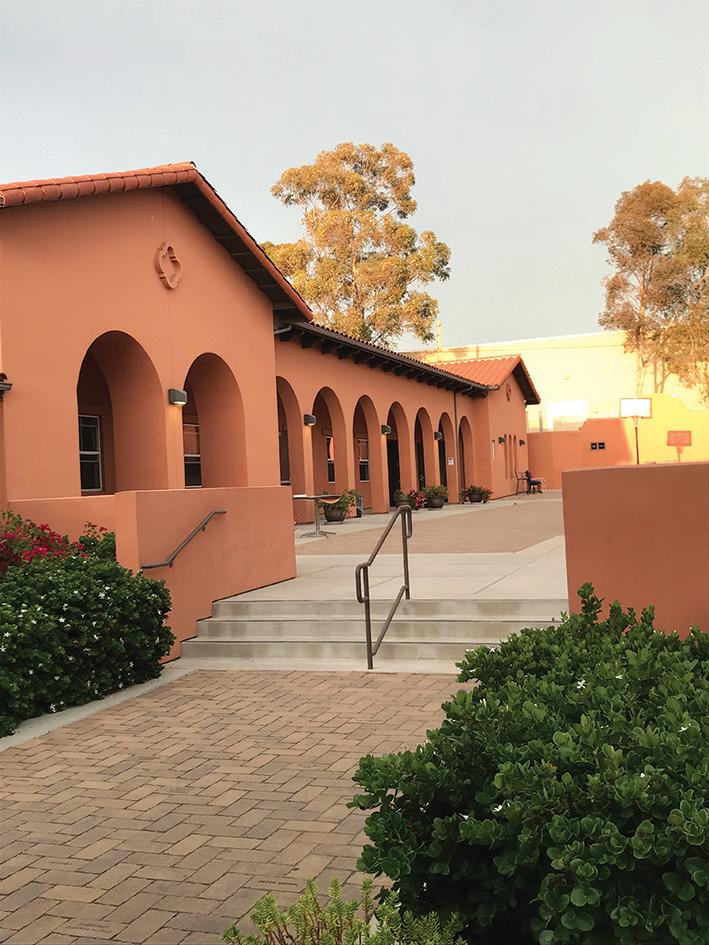
who need to rent rooms. Another possible path is master leasing, where the city leases a series of units and acts as a buffer between landlords and renters.
Sturman and McCorkle offer some tips for people who may be facing homelessness.
Get help right away. Don’t wait until you’re being evicted to ask for help. Check county and city low-income housing lists and call to ask what population of area mean income (AMI) they support.
Ask if a waitlist is open, how to get on it, and how to stay on it.
Talk to an organization like Interfaith, Community Resource Center (CRC), MAAC.
Get yourself an advocate and a case manager to help you get your paperwork in line. It’s much easier to keep someone in a home than to find them a home once they’re out. Get food relief through CalFresh to help with expenses. San Diego County Food Bank has a map of services. According to the California Civil Rights Department (CRD), you cannot be discriminated in housing because of your gender, race, national origin, sexual orientation, gender identity, religion, or immigration status.
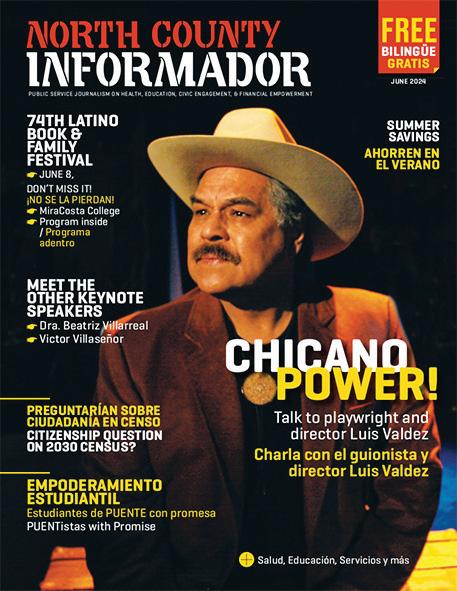


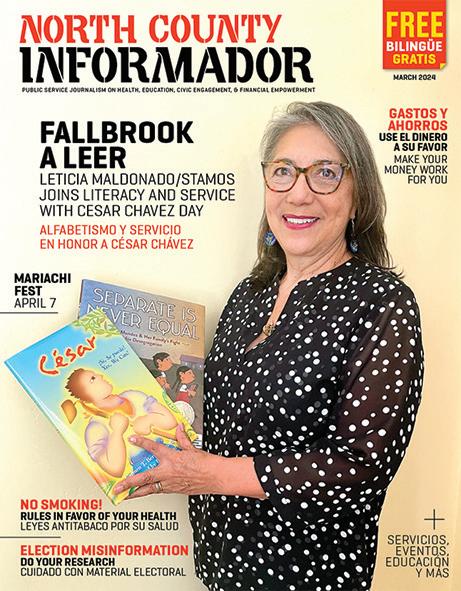
Los proveedores de servicios en el norte del condado abordan el problema de personas sin vivienda
By Melanie Slone
Había una mujer que “vivía sola en Escondido. Le dio cáncer de mama y no podía trabajar. Recibió tratamiento médico, perdió su vivienda y se quedó sin hogar”, cuenta a North County Informador Daniel Sturman, analista en la División de Servicios de Vivienda y Servicios para Personas sin Hogar de la ciudad de Vista. Ella representa solo una de las muchas personas sin hogar en el norte del condado de San Diego. El ingreso medio de la región (AMI) para el condado de San Diego en 2024 es de $119,500. Con estas cifras, no sorprende que la población sin vivienda haya aumentado en los últimos 10 años. “Estamos viendo un gran aumento en el número de personas mayores y familias”, dice Marylynn McCorkle, gerente de colaboración de Alliance for Regional Solutions. “El cincuenta por ciento de las personas en nuestros refugios están trabajando o tienen algún tipo de ingreso”, añade. Simplemente no pueden costear una casa”.
Ahí es donde intervienen los programas regionales de vivienda.
La Alianza para Soluciones Regionales reúne a proveedores de soluciones a corto plazo, gestión de casos y servicios en el norte del condado, con el objetivo de brindar a las personas un camino hacia la autosuficiencia y una vivienda permanente.
La Alianza comenzó en 2006 como una Red de Refugios de Invierno y luego se expandió por toda la región. Hoy, el Comité Puente hacia la Vivienda es uno de los siete grupos de trabajo colaborativos.
“La colaboración funciona”, dice

Las mascotas son de las mejores redes de apoyo para las personas con inseguridad de vivienda, dice Daniel Sturman.
McCorkle. “El norte del condado es fantástico en cuanto a colaboración”. Han creado un Grupo de Trabajo Regional sobre Personas sin Hogar, con Interfaith Community Services como patrocinador fiscal.
Cada ciudad aporta una determinada cantidad a la Alianza, que se reparte entre los distintos refugios del Norte del Condado. “Es una colaboración de las ciudades y los refugios”, dice McCorkle. “Desafortunadamente, no tenemos muchas camas”, añade, y solo hay cuatro refugios abiertos durante todo el año. Además, este año la Ciudad de Escondido retiró su dinero de la Alianza. “Sienten que cuantos más recursos tengan en Escondido, más gente se acercará a ellos”, dice. Pero “es por eso por lo que los recursos están ahí, porque hay más personas sin hogar”.
El grupo Puente hacia la Vivienda de la Alianza ofrece capacitaciones, colaboraciones y comités que trabajan
para llevar recursos a las personas. También hay refugios fuera de la Alianza que colaboran, como Buena Creek Navigation Center, que abrió en Vista en marzo como un refugio de pocas barreras. “Queremos tener un lugar al que pueda ir cualquiera que esté en cualquier posición, salvo muy pocas excepciones”, dice Sturman. Este refugio incluso permite que mascotas y parejas permanezcan juntas. “Las parejas y las mascotas son de las mejores redes de apoyo que uno puede tener”, nos dice Sturman. Hay reglas, que incluyen no consumir sustancias en las instalaciones, pero dice que al final están “tratando de que sea lo más fácil para las personas en una situación difícil obtener el servicio”. Vista también cuenta con alojamiento para pasar la noche como refugio de emergencia.
El objetivo es servir como puente para que las personas obtengan una vivienda estable, por lo que se requiere
que trabajen con un administrador de casos mientras reciben servicios. Según Sturman, están “colocando metas”, que incluyen obtener una identificación, conseguir un trabajo, ahorrar dinero y trabajar para generar crédito.
Cuando estás sin hogar, te ignoran, dice Sturman. “Eso te afecta emocionalmente; no eres querido, nadie se preocupa por ti”. Pero nos recuerda: “Hay gente muy buena que, sin culpa alguna, vive en la calle. Puede ser un círculo vicioso”.
McCorkle recuerda haber visto familias desesperadas con niños pequeños. “Tienen mucho miedo de perder a sus hijos. Hay todo un grupo que ni siquiera conocemos, que vive en sus coches... o están yendo de casa en casa con amigos”.
También ha habido un aumento en el número de personas mayores que necesitan albergues de emergencia. “Eso es realmente desgarrador”, dice McCorkle. “Si tienes un ingreso fijo y no eres realmente capaz de conseguir un trabajo, tienes 80 años y tienes discapacidades, ¿qué se supone que debes hacer?”
El aumento del número de personas sin hogar ha sido generalizado. Y la gente permanece más tiempo en los refugios que hace 10 años, afirma ella.
“El año pasado, por cada 10 personas que pudimos albergar, 13 personas nuevas se quedaron sin hogar”, nos dice McCorkle. Por eso es tan difícil controlar la situación a pesar de que se está ayudando a muchas personas. Una solución a largo plazo se centraría en la vivienda, añade. “No necesitamos más condominios de un millón de dólares. Lo que necesitamos es vivienda asequible. Ni siquiera tiene que ser de bajos ingresos. Solo tiene
que ser asequible... dos personas de clase trabajadora que quieran un lugar para vivir”.
Mientras tanto, dice, la “situación realista es que mucha gente tendrá que conseguir compañeros de casa”. Sturman también habló de la vivienda compartida. “Sabemos que no hay suficientes estudios y departamentos de una recámara para albergar a todas las personas sin hogar en el condado de San Diego”, dice. Un programa permitiría a los inquilinos alquilar habitaciones en un mismo hogar, pero no serían financieramente responsables si la otra persona o personas se fueran. También se habla de una App para encontrar este tipo de compañeros de piso. Y Vista está trabajando para encontrar propietarios dispuestos a alquilar a personas en esta situación. Elderhelp es un programa que conecta a personas mayores que viven en casas grandes con personas de todas las edades que necesitan alquilar habitaciones. Otro camino posible es el arrendamiento en serie, donde la ciudad arrienda una serie de unidades y actúa como amortiguador entre propietarios e inquilinos.
Sturman y McCorkle ofrecen algunos consejos para las personas que se enfrentan a la falta de vivienda. Obtengan ayuda de inmediato. No esperen hasta que los desalojen para pedir ayuda. Consulten las listas de viviendas para personas de bajos ingresos del condado y la ciudad y llamen para preguntar qué población de ingresos medios de la región (AMI) apoyan.
Pregunten si hay una lista de espera abierta, cómo ingresar y cómo permanecer en ella. Hablen con una organización como Interfaith, Community Resource Center (CRC), MAAC. Consigan un defensor y un
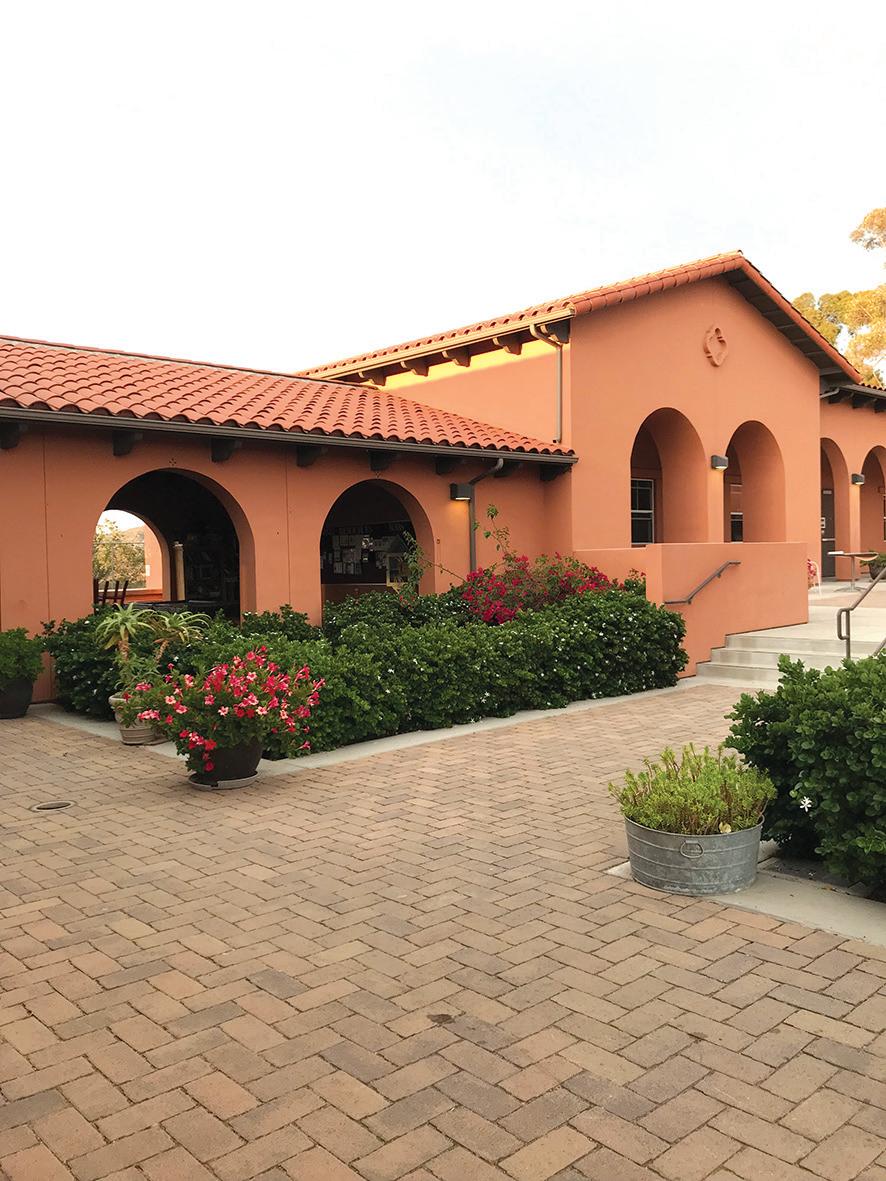
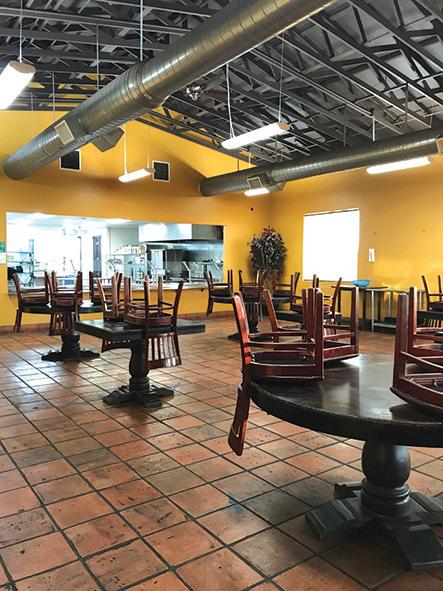
administrador de casos que les ayuden a poner en orden su documentación. Es mucho más fácil mantener a alguien en una casa que encontrarle un hogar una vez que se haya desalojado.
Obtengan ayuda alimentaria a través de CalFresh para ayudar con los gastos. El Banco de Alimentos del Condado de San Diego tiene un mapa de servicios.
Según el Departamento de Derechos Civiles de California (CRD), no se puede ser discriminado en materia de vivienda por cuestiones de género, raza, origen nacional, orientación sexual, identidad de género, religión ni estatus migratorio.
Rent Assistance
Asistencia on la renta - (858) 694-4801 or Toll free (877) 478-LIST (5478)
CalWORKS Housing Support Program Programa de vivienda de CalWorks -(760) 871-1900
-(760) 696-9600
Shelter Albergue
Interfaith Shelter Network North Coastal Shelter
Address Dirección
Phone Number Teléfono
650 Second Street, Encinitas (760) 230-8821
Interfaith Community Services Haven House 555 Centre City Pkwy, Escondido
Operation Hope North County
Catholic Charities La Posada De Guadalupe
- 760-644-4644 - (760) 4896380, ext. 276
Email / Website / Sitio web
Offers / Ofrece Requirements Requisitos
- Pre-screened men, women and families for up to 8 weeks
- Required to be gainfully employed or working actively toward being employed.
havenhouse@ interfaithservices.org
859 East Vista Way, Vista - 760-536-3880 www. operationhopeshelter. org
2476 Impala Drive, Carlsbad - 760-929-2322
Open year round
- Year Round - Educational and enrichment programs
- Year-round, shortterm shelter for farmworkers and men.
- Case management, showers, breakfast, bagged lunches, and supper.
Shelter
Albergue Phone
Teléfono
Vista Safe Parking (858) 637-3373
- 6:00pm–7:00am, 7 days a week
- Supportive services, restrooms, case managers
YMCA Transitional Youth
Overnight Lodging (760) 908-9373 taysupports@ ymcasd.org
Oceanside Navigation Center OPDHOT@ oceansideca.org.
Buena Creek Navigation Center
- Hombres, mujeres y familias previamente aprobados por hasta 8 semanas.
- Se requiere que tengan empleo estable o que estén activamente buscando empleo
Men & women Hombres y mujeres
Families and women Familias y mujeres
Men only Solo hombres
- Once-a-week safe place to stay overnight for youth ages 18–24.
- Meals, showers, case management
- For men, women, families in Oceanside.
- Pets allowed.
- Low-barrier shelter for Vista and Encinitas.
- Shared bedroom.
- 3 meals daily, showers, laundry, case management, peer support, healthcare through Vista Community Clinic
- Pets allowed
- Couples allowed
Appointments Required,
- Participation in JFS’s Case Management Services
- Functioning vehicle (no oversized vehicles or RVs)
- Cannot be a registered sex offender or have any active warrants Se requiere cita
- Participación en Servicios de manejo de casos
- Vehículo que funciona (no se permiten vehículos de mucho tamaño de RV)
- No se permiten a personas registradas como delincuentes sexuales ni que tengan órdenes de arresto
Check 4-6 pm. at TAY Drop-In Center Llegar entre 4 y 6 p.m. en el Centro TAY
- Identity verified.
- Referral from Oceanside Police Department’s Homeless Outreach Team
- Referrals through outreach programs in the 2 cities.
- Se verifica la identidad
- Remisión del Equipo para Personas sin Hogar del Departamento de Policía de Oceanside
- Remisiones mediante programas en ambas ciudades.


